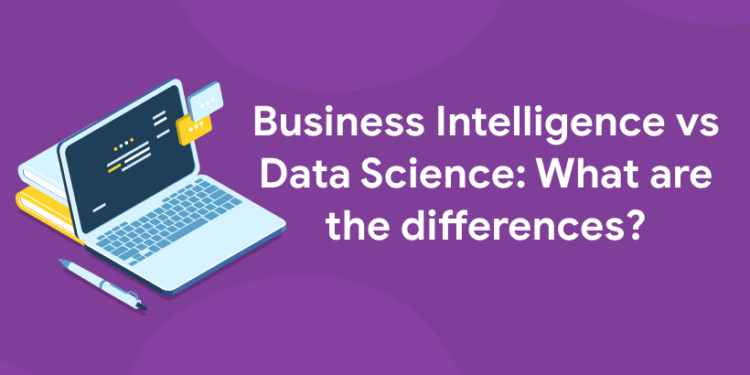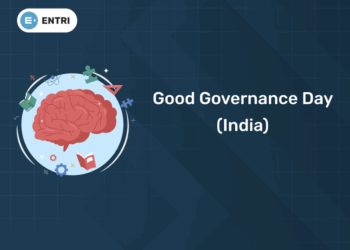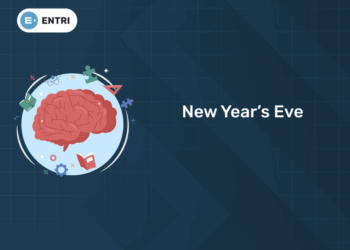Table of Contents
Business intelligence and data science are two related but very different fields that both focus on helping companies make better business decisions. While these two fields do have some similarities, there are also plenty of differences between the two, including their overall goals, the tools used to reach those goals, the way data is collected and analyzed, and more. In recent years, business intelligence and data science have become two of the most sought-after skills by employers in the tech industry. Despite the fact that both job titles are often used interchangeably and that many job descriptions advertise for BI or DS or BI/DS roles, there are actually quite a few differences between the two disciplines. In this article, we will cover 10 of the most significant differences between data science to business intelligence to help you make sure you choose the right career path to suit your interests and goals. Business intelligence and data science may sound like they’re closely related, but you may be surprised to learn how different they are, especially in terms of the work involved and their respective career paths. While business intelligence is focused on creating systems that help businesses make smart decisions with existing data, data science refers to the process of collecting data and using it to create something entirely new, such as models and algorithms. Let’s explore 10 of the main differences between business intelligence and data science below!
1) Starting Out
1: Which of the following algorithms is most suitable for classification tasks?
While most IT companies are happy to toss a variety of technology your way, it can be hard to navigate through. What you need is direction on where to start. Ask your potential vendor what steps they take when starting out a project with a client. Their answers will show you whether or not they know how to structure their work for success—and if that’s what you’re looking for in an IT partner. If you have some existing data in Excel sheets, ask them if they have experience working with that format. If they say yes, ask them to provide a sample report so you can see how well it turned out. Or if you have structured data in an Access database, ask them to show you how easy it would be for them to get started. This way, by asking specific questions about your needs up front, you’ll find someone who knows what’s needed before a single line of code has been written. That’s always a good sign.
To know more about data science in Entri app
🚀 Start Coding Today! Enroll Now with Easy EMI Options. 💳✨
Equip yourself with in-demand skills to land top-tier roles in the data-driven world.
Start Learning Now with EMI Options2) Data Gathering
First things first, in order to do data science, you need data. This is where business intelligence comes in—BI helps collect and analyze data. While some refer to BI as more of a tool than a field, it’s still very much a discipline that involves knowledge of statistics, databases, and more. Typically speaking though, most people who are working in BI have little-to-no training or background in programming or machine learning. As such, they’re focused on collecting and analyzing data from existing systems (usual spreadsheets) rather than creating new models. Meanwhile, data scientists tend to be much more focused on building models from scratch using machine learning techniques like regression analysis or decision trees. They’re also likely to use languages like Python or R for their work. Both fields are concerned with turning raw data into actionable insights, but they each take different approaches toward doing so. It all depends on what kind of data you’re looking at and what type of questions you want answered. In other words, if your main goal is to turn large amounts of unstructured data into information that can be used by others in your organization, then BI might be a better fit for your skillset. But if you’re hoping to explore those same datasets through an entirely new lens—one that reveals patterns previously unseen—then a career in data science might make more sense.
Are you aspiring for a booming career in IT? If YES, then dive in |
||
Full Stack Developer Course |
Python Programming Course |
Data Science and Machine Learning Course |
3) Value Of Data
If you ask some people, data is king. But how many of them can articulate how to make better business decisions from that data? How do we know what questions to ask? Are all questions of value? These are all critical considerations. That’s why, before your organization takes up data analytics or business intelligence, it’s important to clearly define who you are as an organization, what problem(s) you’re trying to solve (or at least address), what methodology you’ll use and what specific measurable outcomes/results you expect. When these things are clear, then data becomes a tool to help us get there. It’s not about big data for its own sake; it’s about using data in a way that makes sense for our organization and our industry. This goes back to defining who you are and what problems you’re trying to solve. For example, if I’m running a fast-food restaurant chain and I want to increase customer loyalty by offering discounts based on customer purchasing habits, then my problem might be stated as: How do I increase my customers’ frequency of visits? The next step would be to determine which data will help me answer that question—for example, loyalty card purchases vs. credit card purchases vs. traffic flow patterns vs. weather patterns, etc.—and then design a system to collect that data so I can analyze it and come up with answers. Ultimately, one of those answers may very well be discounts, but even if it isn’t, knowing where to look for answers is crucial when working with any type of data analysis or BI software package. A good BI software package should allow users to see where they are now in relation to their goals and provide insight into how they got there so they can make adjustments along the way. For more information on Business Intelligence Vs Data Science , go here .
Start your preparations with Entri app
4) Interpreting Data
One of data science’s most important skills is being able to interpret data, using a variety of statistical techniques to transform raw numbers into insight. While business intelligence may use similar tools, it focuses more on creating reports for senior executives. It’s not enough to just draw charts—business intelligence calls for creating clear summaries that show where there are problems or opportunities. It also means analyzing which stats are important (what’s called data reduction) and making sure you’ve interpreted those statistics correctly. Having an understanding of how your boss thinks can help make your reports even more effective, since it allows you to tell stories in ways that resonate with different people in your organization. A big part of BI is turning raw data into information leaders can use every day. On its own, data isn’t very useful. But once you’ve turned it into actionable insights, it becomes powerful stuff. That’s why we see so many companies hiring people who know what they’re doing when it comes to converting huge amounts of info into easy-to-understand visualizations and infographics. In fact, demand for such talent has grown so much that we’re seeing specialized analytics degrees crop up all over the place—and graduates walking away with five-figure starting salaries at some organizations.
🚀 Start Coding Today! Enroll Now with Easy EMI Options. 💳✨
Equip yourself with in-demand skills to land top-tier roles in the data-driven world.
Start Learning Now with EMI Options5) Investment In Technology
Big data is a huge investment for any company, so it’s no surprise that many CEOs still have reservations about its long-term payoff. How does it affect people on a day-to-day basis? Can people really see results from their new investments or are they just paying for future benefits? These are questions you should ask yourself before you decide to invest in your business technology. Research can help you learn how big data has impacted other companies—and what kind of things they look at when they want to evaluate their return on investment. Although analysts are still working out best practices in big data, many of them agree that an organization has to find ways to integrate more information into its standard processes and tools for true success. For example, if your sales team uses Salesforce to manage leads and contacts, consider getting them access to real-time analytics. If not now, when will you start looking at these possibilities? The longer you wait, the less likely it is that you’ll get a good ROI. One way or another, there’s money being left on the table if you don’t do something soon!
6) Deployment Of Systems
Unfortunately, business intelligence (BI) projects often suffer from inefficient implementations. BI is a complicated technology to get right, so it’s not surprising that many organizations end up getting it wrong. Poor deployment means users don’t adopt systems; if you don’t use a system, there is no way for it to positively impact your organization. Unfortunately, if you don’t deploy a system correctly, you can damage your organization far more than not implementing any system at all. To avoid that pitfall, follow these best practices. The first thing to do when planning for deployment is to understand what it takes to make an implementation successful. As we discuss in our whitepaper on project management, understanding what success looks like is one of three pillars of successful project management, along with understanding why you are doing something and how you will measure success. This applies just as much to BI as it does other types of projects. The primary reason people choose Big Data technologies such as Hadoop or NoSQL is that they promise speed: companies want faster results, faster processing times, or faster delivery of new data products.
get data science and ml certification at entri app ! get a fee demo video !
7) Culture Of Analysis
One of my favorite differences between business intelligence (BI) and data science is in how these two disciplines approach analysis. BI professionals are often trained to focus on data that they can directly use in their day-to-day work. The result is a culture of analytics within an organization: Many people gather, analyze, and act on insights provided by their BI tools. However, it’s possible to go too far; certain areas may be neglected because they don’t produce immediate results or provide metrics with which a team can measure its performance. BI helps businesses make sense of past experiences but doesn’t do much to prepare them for future challenges. In contrast, data scientists spend most of their time analyzing patterns in large datasets. Their goal is to create new models and algorithms that will allow businesses to predict what will happen next—and then give them guidance about what actions they should take. In other words, while BI professionals focus on what has happened already, data scientists concentrate on what will happen next. They also tend to have more experience working with code than many other types of analysts. This difference affects everything from job titles (data scientist vs analyst) to salary expectations ($100K+ vs $50K-$70K). When you consider all these factors together, it’s clear why companies might want one type of employee rather than another.
8) Independence To Think Out-Of-The Box
Business intelligence professionals are traditionally more subject to company policy when it comes to decision-making. Data scientists, on the other hand, are often encouraged to think creatively and independently because they’re trusted to come up with new solutions that can help a business grow or solve existing problems. The key difference is who has final say in your decision-making process. While both BI professionals and data scientists need a certain amount of independence, BI professionals have traditionally been held more accountable for how their work is received by upper management than data scientists. But with data science continuing to grow as an essential career skill for many companies, some employers may look at today’s fresh college graduates and see them as just another group of job candidates who all perform well on tests—but not much else. That means you’ll likely be expected to take initiative and show initiative from day one. And if you don’t? You might be looking for a new job sooner rather than later.
9) Reporting Structure
Data science is a relatively new field, so you can expect some differences between companies in their data science department’s reporting structure. Some companies use analysts that report directly to management, while others have them report through IT. Additionally, data scientists might not all be on equal footing with one another – some may have more project authority than others, depending on their experience level. One company I worked for had levels ranging from brand-new graduate hires (Level 1) to senior leaders with over a decade of experience (Level 3). In contrast, most traditional business intelligence departments are fairly standard in terms of who reports to whom: executives or management see monthly or quarterly project updates from an IT manager or equivalent level, who then sends high-level summary reports to other management staff every few months. The bottom line is that if you’re interested in becoming a data scientist, don’t worry too much about your exact reporting structure; instead focus on getting your foot in the door somewhere where they need help! With time, both fields will probably become more standardized as they mature. However, until then, it’s worth knowing how each differs at its core and thinking about which approach best fits your own goals. One example of an emerging trend is using data engineers as an intermediary step between data scientists and IT teams. These individuals would generally sit somewhere between a mid-level analyst role and that of full data scientist/engineer (for example, like being just below associate/full professor in academia), allowing companies to bridge gaps when hiring talent but still ensuring higher quality results due to less direct influence by management or marketing teams when compared to pure business intelligence roles.
To know more about data science in Entri app
10) Career Growth
Regardless of whether you aspire to a business intelligence to data science position, now is a great time to start learning more about analytics. It’s never too early to start networking with professionals in your industry, reading industry publications, and connecting with people who can help you advance in your career. In addition, it’s always important to build skills that are transferable across industries; keeping an eye on what tech giants like Facebook, Google, IBM and Microsoft are doing with business intelligence/analytics will make you aware of valuable trends as well as potential job opportunities. The sooner you begin, the better prepared you’ll be for whatever lies ahead. However, there are differences between business intelligence (BI) jobs and data science positions — including skill sets, salary expectations, and career advancement opportunities — so understanding how these roles relate to each other can only benefit job seekers. Here are 10 surprising ways BI differs from data science. If you are interested to learn new coding skills, the Entri app will help you to acquire them very easily. Entri app is following a structural study plan so that the students can learn very easily. If you don’t have a coding background, it won’t be any problem. You can download the Entri app from the google play store and enroll in your favorite course.
| Our Other Courses | ||
| MEP Course | Quantity Surveying Course | Montessori Teachers Training Course |
| Performance Marketing Course | Practical Accounting Course | Yoga Teachers Training Course |












